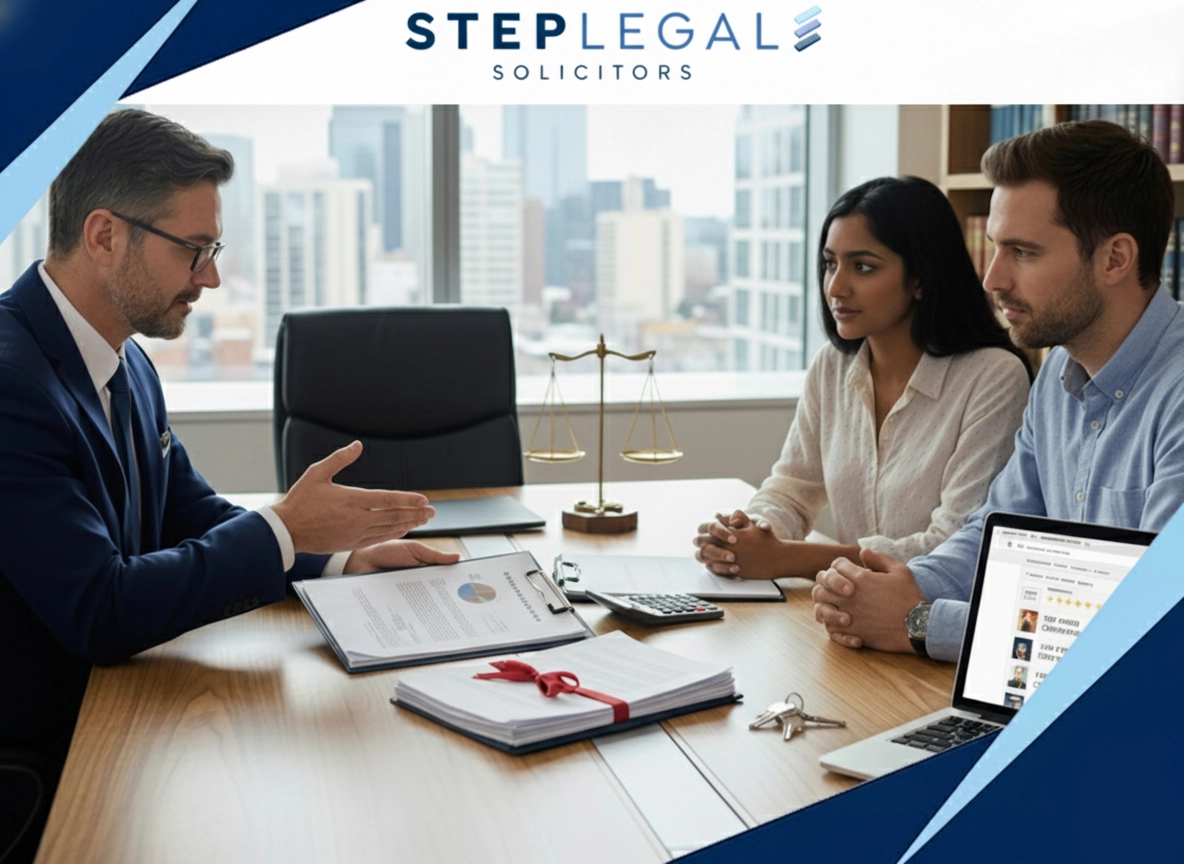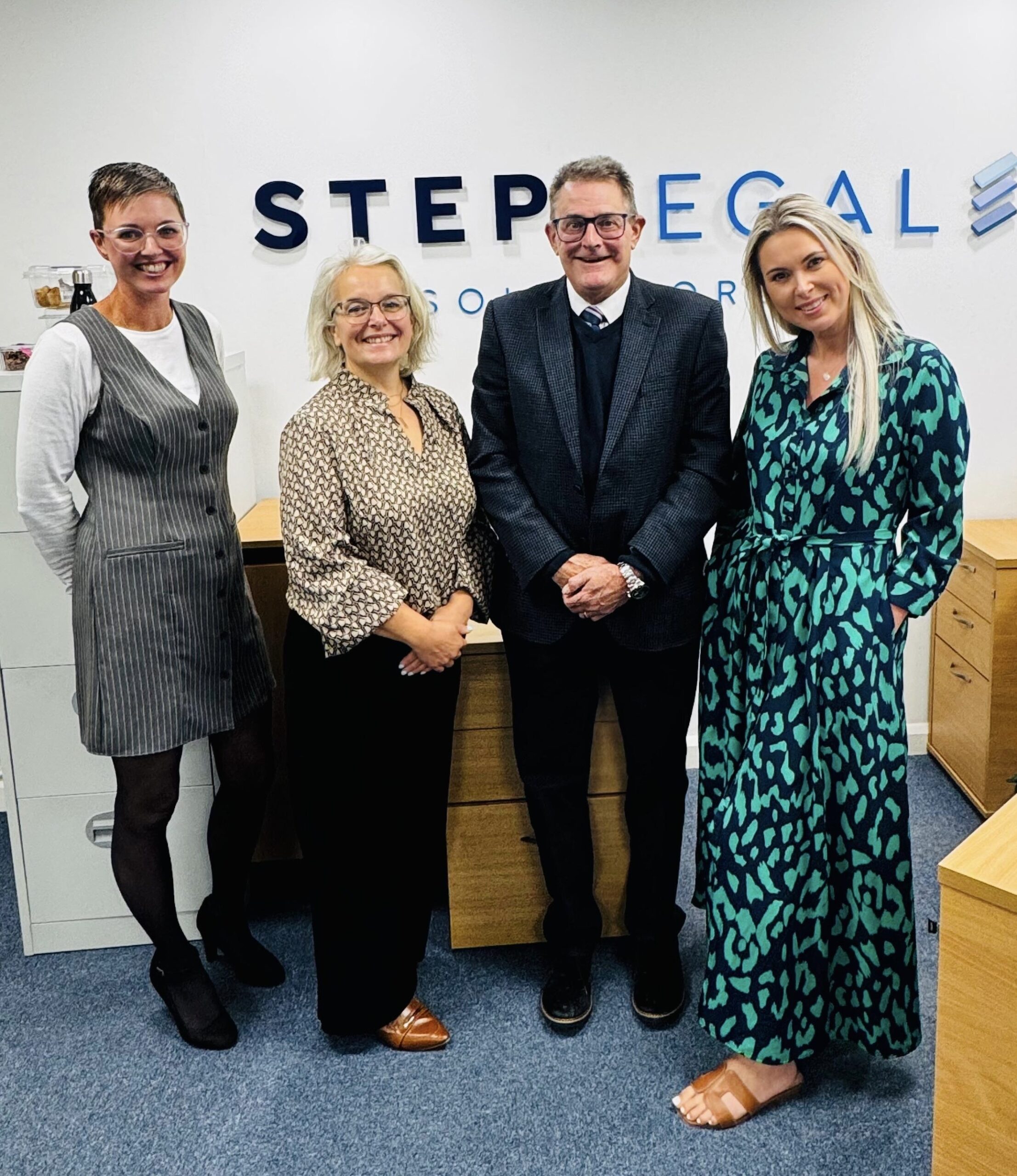
Everything You Need to Know About Conveyancing Costs
Buying or selling a property is a significant milestone in anyone’s life, and it involves more than just the property price itself. Among the many considerations, conveyancing is crucial to ensuring a legal, secure, and smooth transfer of ownership. While conveyancing costs are an important part of the process, understanding what influences them, how the process works, and what to watch out for is far more valuable than focusing solely on numbers.
Conveyancing refers to the legal and administrative steps required to transfer property ownership from one party to another. This process is handled by licensed conveyancers or solicitors, who are trained to navigate the complex legal landscape surrounding property transactions. Conveyancing ensures that buyers obtain clear ownership of a property and that sellers meet all legal obligations, preventing disputes, financial loss, or other complications.
Even if you are familiar with buying or selling property, conveyancing can be a confusing area because it involves multiple steps, legal terminology, and interactions with authorities. Understanding what affects conveyancing costs, the stages involved, and how to choose the right professional can make the process more manageable and less stressful.
What is Conveyancing and Why Does It Matter?

Conveyancing is the legal process that facilitates the transfer of property ownership. This process involves reviewing legal documents, verifying ownership, handling searches and enquiries, and registering the new owner with the appropriate authority. Without conveyancing, buyers might acquire properties with unresolved legal issues, and sellers could face disputes after the transaction is completed.
There are different types of conveyancing depending on the property and the transaction:
- Residential Conveyancing: This involves homes, apartments, or other personal residences. Residential conveyancing focuses on standard property checks, contracts, and legal obligations specific to private ownership.
- Commercial Conveyancing: This is applicable for businesses or investment properties. Commercial transactions are often more complex due to additional regulations, zoning laws, leases, and higher stakes.
Even within residential or commercial conveyancing, the complexity of the property and transaction can vary widely. Therefore, the approach, effort, and time required can differ significantly.
Factors That Influence Conveyancing Costs

Conveyancing costs are influenced by several factors, all of which relate to the complexity, location, and legal requirements of the transaction. While it’s not possible to provide specific prices without context, understanding these factors can help buyers and sellers anticipate what might affect their overall experience.
Property Type and Complexity
The type of property being transferred is a primary factor in conveyancing. Freehold properties, where ownership includes both the building and the land, are typically simpler to convey. Leasehold properties, on the other hand, involve additional considerations such as lease agreements, ground rent, service charges, and other obligations. Properties with unusual boundaries, multiple owners, or historical disputes may also require more detailed checks and documentation.
Location and Regional Differences
The location of the property can influence conveyancing in several ways. Urban areas may require more extensive planning and environmental checks, while rural properties could involve inquiries about easements, water rights, or conservation regulations. Additionally, different regions may have specific administrative procedures or documentation requirements that conveyancers must follow, affecting the amount of work involved.
Transaction Complexity
Not all property transactions are straightforward. A simple transaction might involve a single buyer, a single seller, and a straightforward mortgage. More complex transactions could include multiple owners, inherited properties, or properties with existing legal disputes. Complex transactions require additional legal research, documentation, and communication, which can increase the time and effort involved in conveyancing.
Legal and Administrative Steps
Conveyancing involves a range of legal and administrative tasks. Conveyancers conduct searches with local authorities, check property titles, prepare and review contracts, and liaise with lenders. Each step is essential to ensure that the transaction is legally sound and that the buyer receives clear ownership. The more extensive the checks required, the more work the conveyancer must undertake.
Additional Services
Beyond the standard conveyancing steps, additional services may be necessary depending on the property or transaction type. Examples include:
- Environmental or drainage reports
- Planning permission verification
- Verification of shared ownership agreements or restrictions
The requirement for such additional services is typically dictated by the property’s characteristics and the complexity of the transaction.
Speed and Urgency
Time can also affect the conveyancing process. Transactions that need to be completed quickly may require conveyancers to prioritize work, coordinate searches urgently, or allocate extra resources to meet deadlines. While efficiency is generally beneficial, it can also lead to more intensive work for the professional handling the transaction.
Steps Involved in Conveyancing

Although every property transaction is unique, the conveyancing process generally follows a structured sequence of steps. Understanding these steps helps buyers and sellers anticipate what will be required and why each stage is important.
1. Instruction and Initial Checks
The process begins when the buyer or seller instructs a conveyancer to handle the transaction. The conveyancer conducts initial checks on the property, including confirming ownership status and identifying any potential issues. They also establish communication channels with all parties involved, including lenders, agents, and other professionals. At this stage, the conveyancer provides guidance on the process and outlines responsibilities for each party.
2. Contract Preparation and Review
Contracts are prepared or reviewed to ensure they accurately reflect the terms agreed upon by the buyer and seller. This includes verifying property boundaries, easements, and any other legal obligations. Clear and precise contracts are crucial to avoid disputes or misunderstandings during or after the transaction.
3. Searches and Enquiries
Conveyancers carry out searches with local authorities and other relevant bodies to identify any legal or environmental issues affecting the property. This may include checks for planning permissions, building regulations compliance, flood risk, or other potential concerns. Conveyancers also raise enquiries with the seller to clarify any uncertainties about the property’s title, condition, or legal obligations.
4. Mortgage and Financial Arrangements
If the buyer is using a mortgage, the conveyancer liaises with the lender to ensure that financial arrangements align with the legal transfer. This includes checking mortgage offers, coordinating payment schedules, and ensuring that funds are available for the completion date. The conveyancer also confirms that any existing mortgages on the property are discharged appropriately.
5. Exchange of Contracts
Once all checks and enquiries have been satisfactorily completed, the contracts are exchanged. This is a critical stage because it legally commits both parties to the transaction. The conveyancer ensures that all documentation is correct and that the terms agreed upon are reflected accurately in the contract.
6. Completion and Registration
Completion marks the official transfer of ownership. The conveyancer oversees the final legal steps, including transferring funds, confirming the new owner’s registration, and handling post-completion administrative tasks. Proper registration ensures that the buyer has clear ownership and that the property is correctly recorded in public records.
How Conveyancers Can Help Avoid Complications

Conveyancers play a critical role in minimizing risks. Without professional guidance, buyers or sellers may face issues such as unclear titles, disputes over boundaries, or complications with mortgages and registration. By conducting thorough searches, reviewing contracts, and managing communications between parties, conveyancers ensure that transactions proceed smoothly and legally.
Even experienced property buyers benefit from using conveyancers, especially when transactions involve leasehold properties, inherited estates, or unusual legal circumstances. Conveyancers’ expertise can save time, reduce stress, and prevent legal issues that could have long-term financial consequences.
Additional Considerations
When thinking about conveyancing, it’s also important to consider factors such as:
- Communication and Responsiveness: Choosing a conveyancer who communicates clearly and promptly can make a significant difference in how smoothly the process goes.
- Reputation and Reviews: Researching professionals and reading reviews can provide insight into the reliability and quality of service.
- Professional Guidance: Conveyancers not only handle legal documentation but also offer advice on regulatory compliance, potential risks, and best practices for the transaction.
How to Approach Conveyancing Efficiently

Even though conveyancing may seem complex at first, understanding the process and preparing early can make it more manageable. Efficient conveyancing involves planning, organization, and proactive communication with professionals. Here are some ways to approach it effectively:
Prepare Documentation Early
Before instructing a conveyancer, gather all relevant documents related to the property. This may include title deeds, mortgage statements, planning permissions, building warranties, or past property surveys. Having these documents ready reduces delays and allows the conveyancer to begin their checks without waiting for missing information.
Understand Your Responsibilities
Whether you are buying or selling, it is important to understand your role in the process. Buyers need to provide identification, complete mortgage applications, and respond promptly to enquiries. Sellers should ensure that property information is accurate and complete, including details about any disputes, easements, or property restrictions. Clear understanding of responsibilities helps prevent delays and miscommunication.
Maintain Clear Communication
Effective communication with your conveyancer is crucial. Ask questions whenever something is unclear, and respond promptly to requests for information. Many conveyancers provide updates at each stage of the process, which helps reduce anxiety and keeps the transaction on track. Email, phone calls, and online portals are often used to maintain clear lines of communication.
Monitor the Timeline
Conveyancing involves multiple stages that can be affected by third parties such as local authorities, mortgage lenders, or estate agents. Understanding the expected timeline for each stage helps set realistic expectations. It is normal for searches and enquiries to take several weeks, and complex properties may require more time. Being patient but vigilant ensures the process moves forward efficiently.
How to Choose the Right Conveyancer

Selecting the right professional is one of the most important decisions in conveyancing. A conveyancer’s expertise, experience, and communication skills can greatly influence the smoothness of your transaction.
Qualifications and Experience
Always check the qualifications of a conveyancer or solicitor. Licensed conveyancers are trained specifically for property transactions, while solicitors may offer a broader range of legal services. Experience in the type of property you are dealing with residential, commercial, leasehold iis equally important. Experienced conveyancers are better equipped to handle potential complications and provide reliable guidance.
Reputation and Reviews
Researching the conveyancer’s reputation is crucial. Online reviews, recommendations from friends, and professional accreditations can help you identify reliable and trustworthy professionals. Conveyancers who consistently receive positive feedback are often more organized, responsive, and efficient.
Transparency and Communication
A good conveyancer will explain the process in simple terms, outline what is included in their service, and clarify any areas that may require additional work. Transparency in communication helps prevent misunderstandings and ensures that clients know what to expect throughout the process.
Consider Online vs. Traditional Conveyancers
Some conveyancers operate entirely online, offering a streamlined process with digital document management. Traditional conveyancers work through offices and may provide in-person consultations. Both approaches have advantages. Online services can be convenient and efficient, while traditional firms may provide more personalized guidance. The choice depends on your preference and the complexity of the property transaction.
How Can You Avoid Common Pitfalls in Conveyancing

Even with professional help, certain pitfalls can slow down or complicate property transactions. Being aware of these issues can help buyers and sellers avoid delays and additional stress.
Incomplete Documentation
One of the most common problems arises from missing or incomplete documents. Buyers or sellers who do not provide all necessary paperwork may experience delays as the conveyancer waits for the missing information. Preparing documents ahead of time can prevent this issue.
Misunderstanding Legal Terms
Property contracts often include legal jargon that can be confusing. Misinterpreting clauses or overlooking important details can lead to disputes or unexpected responsibilities. Conveyancers are there to explain these terms clearly, but taking the time to understand them yourself can reduce confusion.
Ignoring Property Restrictions
Some properties come with restrictions such as easements, covenants, or shared ownership obligations. Failing to identify and understand these restrictions before completion can create problems after the transaction. Conveyancers ensure that such restrictions are clearly identified and communicated.
Delays in Searches and Approvals
Conveyancing involves coordination with external authorities. Delays in receiving local authority searches, land registry updates, or mortgage approvals can slow the process. Keeping in touch with your conveyancer and following up where appropriate can help maintain progress.
Tips for a Smooth Conveyancing Experience

Here are practical tips to ensure the conveyancing process is as smooth as possible:
- Start Early: Begin searching for a conveyancer as soon as you decide to buy or sell a property. Early engagement allows ample time for preparation.
- Stay Organized: Keep all documents in one place and maintain a checklist of what has been submitted and what is outstanding.
- Communicate Promptly: Respond quickly to requests from your conveyancer to avoid unnecessary delays.
- Understand the Process: Familiarize yourself with each stage so you know what to expect and can anticipate potential delays.
- Ask Questions: Never hesitate to ask your conveyancer for clarification on legal terms, processes, or additional work required.
- Be Patient: Some aspects of conveyancing, such as searches and approvals, are beyond anyone’s control. Understanding that delays are common reduces stress.
What are the Hidden Costs and Disbursements

While conveyancing fees are often discussed in broad terms, there are additional elements involved in the process that can affect the overall effort and time required. These are generally referred to as disbursements, which are costs incurred on behalf of the client by the conveyancer to complete the legal process. Understanding these elements helps buyers and sellers anticipate the full scope of the transaction.
What Are Disbursements?
Disbursements are essentially payments made to third parties during the conveyancing process. While they are not the conveyancer’s professional fees, they are part of the overall conveyancing effort because the conveyancer must coordinate these tasks and ensure that each one is completed correctly. Disbursements are a standard part of the process and are typically unavoidable, as they are required to ensure that the property transfer is legally sound.
Examples of Common Disbursements
- Local Authority Searches: These are conducted to identify any legal or environmental factors affecting the property. They can reveal planning restrictions, building regulation compliance, and flood risks.
- Land Registry Updates: Registering the new ownership and updating property records is an essential part of completing the transaction.
- Verification of Easements or Rights of Way: Properties may be subject to legal rights affecting access, boundaries, or shared facilities.
- Administrative Tasks: Conveyancers often handle correspondence with various parties, including mortgage lenders, local authorities, and utility providers. These tasks, while part of the professional process, can require significant coordination.
Even though these costs are separate from a conveyancer’s fees, they represent necessary steps in the legal transfer. Being aware of them conceptually helps buyers and sellers avoid surprises, and ensures that the process is understood as more than just a flat fee for services.
How Do Regional and International Differences Affect Conveyancing

Conveyancing is influenced not just by the property itself but also by regional regulations and practices. Understanding how location affects the process can help buyers and sellers plan more effectively.
Regional Differences
Different regions may require additional searches, documents, or checks. Urban properties might involve more stringent planning checks due to development regulations, while rural properties may require environmental reports or inquiries into water rights and access. Conveyancers familiar with the region can navigate these requirements efficiently, ensuring that all legal obligations are met.
International Differences
If you are involved in property transactions abroad, the conveyancing process may vary significantly. Each country has its own regulatory framework, legal terminology, and administrative requirements. Some countries may require additional verifications, notarizations, or governmental approvals. Even if you are purchasing a property through a local agent, using a conveyancer familiar with the jurisdiction is essential to ensure compliance and avoid potential legal complications.
Leasehold vs. Freehold Across Regions
The distinction between leasehold and freehold can also vary depending on regional regulations. In some areas, leasehold arrangements carry additional obligations, such as ground rents, maintenance fees, or shared ownership responsibilities. Understanding these nuances is critical, particularly for buyers unfamiliar with local property practices.
What are the Stages of Conveyancing

Conveyancing involves several stages, and understanding each one in detail helps buyers and sellers anticipate what will happen, what to prepare, and how to avoid delays or complications. Let’s explore each stage with examples and practical advice.
1. Instruction and Initial Checks
The first stage begins when a buyer or seller formally instructs a conveyancer. This step involves:
- Confirming Identity: Conveyancers must verify the identity of their clients to comply with legal and anti-money-laundering regulations. This usually involves providing identification documents and proof of address.
- Property Verification: For sellers, the conveyancer will review property ownership records to ensure the seller has the legal right to sell. For buyers, this stage confirms the legal status of the property.
- Setting Expectations: The conveyancer outlines the process, timelines, and responsibilities. They may provide a checklist of documents required and clarify how communication will occur throughout the transaction.
Example Scenario: Jane is buying her first home. By providing her ID and mortgage details promptly, she allows her conveyancer to begin searches immediately. This proactive approach avoids delays later in the process.
2. Contract Preparation and Review
Contracts are at the heart of any property transaction. They outline the terms agreed upon by both parties and provide legal protection.
- Key Components: Contracts typically include property details, price, any restrictions or covenants, fixtures and fittings included, and responsibilities of both parties.
- Review Process: The conveyancer carefully examines the contract for discrepancies, missing information, or potential legal risks. They may raise questions with the seller’s solicitor to clarify uncertainties.
- Negotiation: Occasionally, contract terms require negotiation, such as requests for repairs or clarification of boundaries. A conveyancer facilitates these discussions professionally.
Example Scenario: Tom notices that the contract does not mention access to the shared driveway. His conveyancer raises this issue with the seller’s team, ensuring the contract reflects the true agreement before signing.
3. Searches and Enquiries
Searches are crucial to uncover potential legal or environmental issues that could affect the property. Common searches include:
- Local Authority Searches: Identify planning applications, building regulations, and other official records.
- Environmental Searches: Check for flood risk, contamination, or other environmental concerns.
- Water and Drainage Searches: Verify that the property is properly connected and that there are no hidden liabilities.
Conveyancers also raise enquiries with the seller, asking for clarification on property conditions, legal obligations, or disputes.
Example Scenario: A buyer discovers through an environmental search that the property is near a flood-prone area. The conveyancer advises on potential mitigation steps and ensures the issue is formally recorded in the transaction.
4. Mortgage and Financial Coordination
If the buyer requires a mortgage, the conveyancer coordinates closely with the lender:
- Checking Mortgage Offers: Ensuring terms are accurate and align with the purchase contract.
- Releasing Funds: Organizing the transfer of money from the lender to the seller at the time of completion.
- Discharging Existing Mortgages: If the property being sold has an existing mortgage, the conveyancer ensures it is properly cleared.
Practical Tip: Buyers should provide mortgage documentation early to prevent delays at this stage. Conveyancers rely on accurate financial information to synchronize the legal and financial aspects of the transaction.
5. Exchange of Contracts
Exchange of contracts is a critical milestone because it legally binds both parties to the transaction. Before exchange:
- All searches and enquiries must be satisfactorily completed.
- Contracts are double-checked to ensure accuracy and completeness.
- Completion dates are agreed upon.
Once contracts are exchanged, both parties are committed, making it difficult to withdraw without potential legal or financial consequences.
Example Scenario: Sarah’s conveyancer ensures all contractual clauses are clear before exchange. When a minor dispute arises about garden boundaries, it is resolved promptly, preventing delays.
6. Completion and Registration
Completion is the stage where ownership officially changes hands. Key activities include:
- Final Transfer of Funds: The conveyancer ensures the seller receives the payment and that any mortgage balances are cleared.
- Registration: The new owner is registered with the land registry or equivalent authority, confirming legal ownership.
- Post-Completion Tasks: Conveyancers handle administrative follow-ups, such as notifying local authorities or updating relevant documentation.
Example Scenario: On completion day, the buyer receives the keys once the conveyancer confirms funds have been transferred. Within days, the property is officially recorded in their name, securing legal ownership.
Real-Life Scenarios Illustrating Common Complications

Even with careful planning, property transactions can face challenges. Understanding real-life examples helps illustrate potential risks:
- Boundary Disputes: A buyer purchases a property assuming access to a shared driveway. Midway through conveyancing, the dispute is discovered. Early intervention by the conveyancer ensures contractual amendments and avoids future disputes.
- Incomplete Documentation: Sellers fail to provide original title deeds or building warranties. This delays searches and completion, highlighting the importance of preparation.
- Environmental Issues: Discovering flood risks or contamination late in the process can impact financing and insurance. Conveyancers mitigate these risks by conducting thorough searches early.
Tips for Saving Time and Reducing Risks

While avoiding price discussions, there are practical ways to streamline conveyancing and minimize potential problems:
- Organize Documents: Keep all property-related documents accessible.
- Respond Promptly: Quick replies to conveyancer enquiries prevent bottlenecks.
- Clarify Terms Early: Ensure understanding of contracts, covenants, and restrictions before exchange.
- Use Experienced Professionals: Conveyancers familiar with local procedures or property types can navigate potential complications efficiently.
- Plan for Contingencies: Anticipate potential delays with searches, approvals, or mortgage processes and build flexibility into your timeline.
International Considerations
For those involved in overseas property transactions, understanding the local conveyancing laws is essential. Key factors to consider include:
- Legal Framework: Property law, registration procedures, and ownership rights differ between countries. What applies in one country may not apply in another.
- Notarization and Certification: Some countries require documents to be notarized, legalized, or translated, adding complexity to the process.
- Tax and Duty Implications: Property transfers in different countries can involve local taxes, registration fees, and other obligations. Understanding these requirements ensures compliance and avoids penalties.
- Cultural and Administrative Practices: Different countries may have varying expectations for communication, documentation, and procedural steps. Working with a conveyancer familiar with the jurisdiction is critical.
Example Scenario: An overseas investor buying a property abroad may need certified translations of property deeds and notarized signatures. A conveyancer with international experience ensures all legal requirements are met.
Tips for First-Time Buyers

For first-time buyers, conveyancing can seem especially daunting. Here are practical tips to navigate the process successfully:
- Start Early: Begin researching conveyancers and gathering documents as soon as you decide to buy a property.
- Understand Responsibilities: Know what documents and information you must provide, including identification, financial statements, and mortgage details.
- Ask Questions: Never hesitate to ask your conveyancer to explain legal terminology or processes. Understanding each step reduces anxiety and prevents mistakes.
- Keep Organized Records: Maintain a folder with all property-related documents, emails, and correspondence. This makes it easier to respond promptly to enquiries.
- Stay Patient: Property transactions often involve waiting for third-party approvals. Anticipate delays and plan accordingly.
- Use a Reputable Conveyancer: Choose a professional with experience handling transactions similar to yours, ideally someone familiar with local practices.
What Are the Most Common Misconceptions About Conveyancing

Many buyers and sellers have misunderstandings about conveyancing. Clarifying these helps avoid frustration and surprises:
- Conveyancing is only about paying a fee.
Conveyancing is a comprehensive legal process that ensures ownership is transferred safely and legally. The fee is only one part of the process; the conveyancer also handles searches, documentation, and communication with all relevant parties. - DIY conveyancing is always cheaper and safe.
While it may seem economical, DIY conveyancing carries risks. Missing a step or misinterpreting legal requirements can lead to disputes, delays, or even financial loss. Professional guidance is highly recommended, especially for complex properties. - All conveyancers provide the same service.
Conveyancing services vary by experience, approach, and regional expertise. Choosing a conveyancer with a strong track record, clear communication, and familiarity with your property type can make a significant difference. - The process is quick and straightforward.
While some transactions are relatively simple, many factors such as searches, legal complexities, or mortgage approvals can extend the timeline. Being prepared for potential delays ensures a smoother experience.
Frequently Asked Questions
How Long Does Conveyancing Usually Take?
The duration depends on property complexity, the responsiveness of all parties, and the time required for searches and approvals. Simple transactions may take a few weeks, while complex cases can extend over several months.
Can I Switch Conveyancers Mid-Transaction?
Yes, but it can introduce additional delays. The new conveyancer must review all documents and correspondences to ensure continuity. Evaluate the need carefully before switching.
Are Conveyancing Fees Refundable?
Typically, fees cover services provided and coordination of the legal process. Refund policies vary, so it is essential to review the engagement terms carefully.
What Happens if Issues Arise During Conveyancing?
Conveyancers identify and address issues such as unclear titles, boundary disputes, or regulatory concerns. Their expertise helps resolve these problems before completion, avoiding potential disputes post-sale.
Is Conveyancing Mandatory?
Yes, for legal ownership transfer. Attempting to bypass professional conveyancing can result in legal complications and disputes.
Can Conveyancing Be Completed Remotely?
Many conveyancers offer online services, allowing for digital document submission and remote communication. This can be convenient, especially for straightforward transactions or long-distance property purchases.
Conclusion
Conveyancing is a vital component of any property transaction, providing legal protection and peace of mind for both buyers and sellers. While conveyancing costs are often a concern, understanding the process, the factors influencing it, and best practices is far more valuable than focusing solely on fees.
Key takeaways include:
- Conveyancing is essential for safe and legal property transfers.
- Preparation, organization, and early engagement improve efficiency.
- Choosing the right conveyancer based on experience, reputation, and regional knowledge ensures a smoother process.
- Awareness of potential complications, hidden elements, and regional differences helps prevent delays.
- First-time buyers should educate themselves, stay organized, and maintain clear communication with professionals.
By focusing on planning, professional guidance, and proactive engagement, property transactions can proceed confidently and efficiently. Conveyancing is not just a procedural step it is the backbone of a secure property transfer, ensuring legal compliance and protecting all parties involved.















